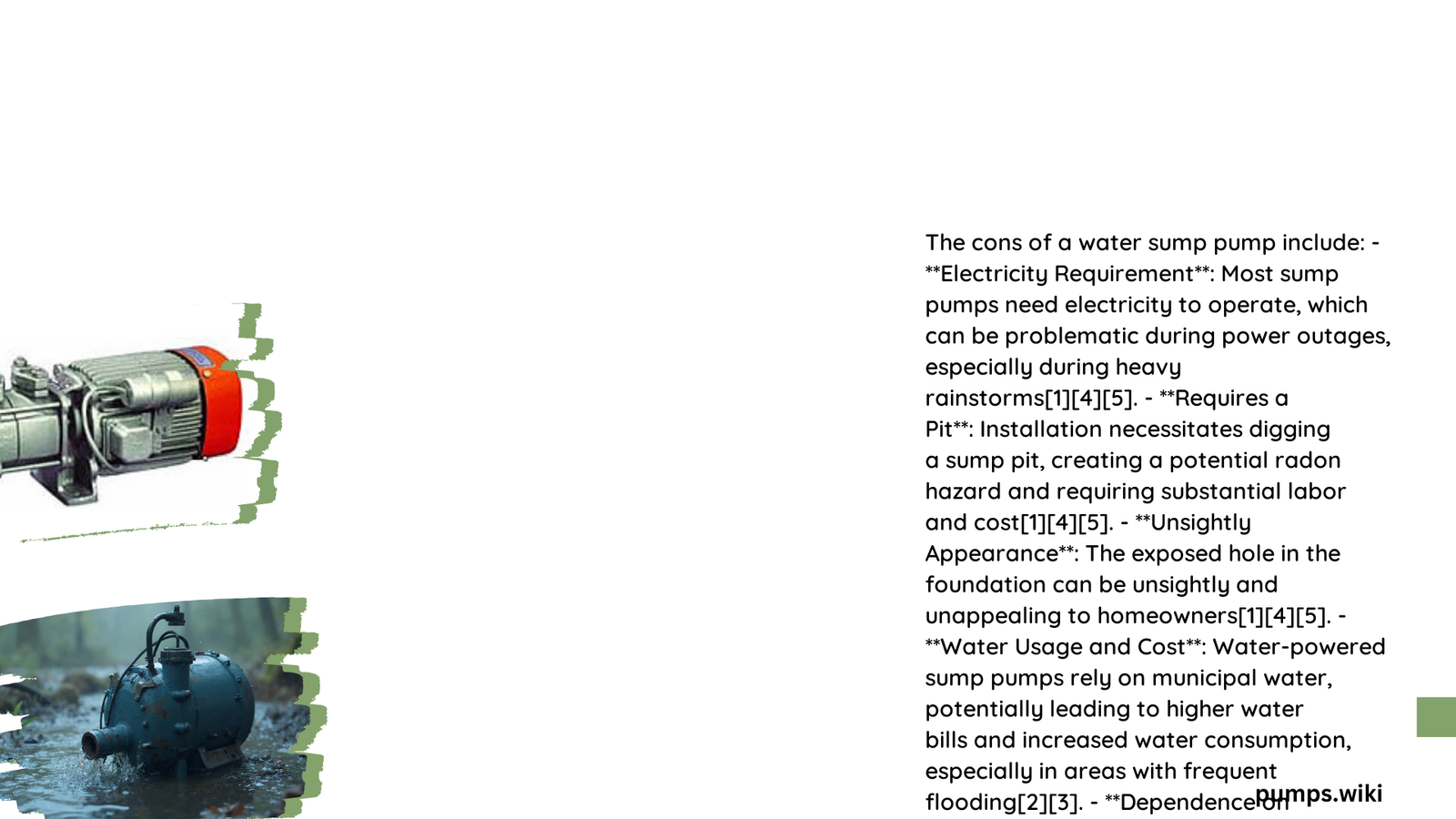Water sump pumps, while essential for preventing basement flooding, come with several drawbacks. These include reliability issues, frequent maintenance requirements, potential inefficiencies, and installation challenges. Understanding these cons is crucial for homeowners to make informed decisions about their basement water management systems and to ensure proper maintenance and operation of their sump pumps.
What Are the Main Reliability Issues with Water Sump Pumps?
Water sump pumps, despite their importance in protecting homes from water damage, are not without their reliability concerns. These issues can range from sudden failures during critical moments to gradual degradation of performance over time.
How Often Do Sump Pumps Fail?
Sump pumps typically have a lifespan of 7 to 10 years, but this can vary significantly based on usage patterns and maintenance practices. The failure rate of sump pumps is a critical concern for homeowners, as a malfunctioning pump can lead to severe water damage.
- Power Outages: Approximately 40% of sump pump failures occur due to power outages. Without a battery backup or auxiliary generator, the pump becomes inoperable during blackouts.
- Clogged Systems: Debris accumulation in discharge lines and pipes is another common cause of failure.
- Lack of Maintenance: Regular cleaning and upkeep are essential to prevent malfunctions.
- Improper Installation: Issues such as overloaded circuits or the use of extension cords can lead to pump failure.
- Mechanical Problems: Debris caught in the impeller or float switch issues can cause the pump to malfunction.
- Wear and Tear: Manufacturing defects and age-related deterioration contribute to pump failures.
What Are the Consequences of Sump Pump Failure?
The implications of a sump pump failure can be severe and costly:
- Basement Flooding: The primary risk is water inundation of the basement area.
- Structural Damage: Prolonged exposure to water can weaken the foundation and walls.
- Mold Growth: Damp conditions create an ideal environment for mold proliferation.
- Property Loss: Valuable items stored in the basement may be damaged or destroyed.
- Health Hazards: Standing water and mold can pose significant health risks to occupants.
What Maintenance Challenges Do Water Sump Pump Users Face?

Maintaining a water sump pump is crucial for its longevity and effectiveness. However, this maintenance comes with its own set of challenges that homeowners must navigate.
How Frequently Is Maintenance Required?
Regular maintenance is essential to keep a sump pump in optimal working condition:
- Monthly Checks: Inspect for clogs and ensure proper operation.
- Post-Storm Testing: Verify pump functionality after significant rainfall events.
- Battery Backup Inspection: Regularly check and maintain backup power systems.
What Are the Typical Maintenance Costs?
The costs associated with sump pump maintenance can add up over time:
| Maintenance Task | Estimated Cost |
|---|---|
| Annual Professional Inspection | $50 – $150 |
| Replacement Parts (e.g., float switch) | $20 – $100 |
| New Pump Installation (if needed) | $300 – $800+ |
What Specific Tasks Are Necessary to Prevent Failure?
To maintain a sump pump’s efficiency and prevent failures, homeowners should:
- Clean the pump’s interior and exterior components regularly.
- Ensure the area around the sump pit is free of standing water.
- Test the pump’s operation, especially after heavy rainfall.
- Replace faulty components promptly to prevent cascading failures.
- Use a dedicated electrical circuit for the pump, avoiding extension cords.
What Efficiency Concerns Exist for Water-Powered Sump Pumps?
While water-powered sump pumps offer certain advantages, they also come with specific efficiency concerns that homeowners should consider.
How Do Water-Powered Pumps Compare to Electric Models?
Water-powered sump pumps differ from their electric counterparts in several key aspects:
- Energy Source: They use municipal water pressure instead of electricity, potentially leading to higher water bills.
- Installation Complexity: These pumps often require more complex plumbing installations.
- Operational Reliability: They can function during power outages but depend on consistent water pressure.
What Are the Long-Term Cost Implications?
Consider the following factors when evaluating the long-term costs of water-powered sump pumps:
- Water Usage Fees: Continuous operation can significantly increase water bills.
- Installation Costs: Higher upfront costs due to specialized plumbing requirements.
- Maintenance Expenses: Potentially lower electrical maintenance but higher plumbing-related costs.
What Installation Drawbacks Should Homeowners Consider?
The installation process for water sump pumps, particularly water-powered models, can present several challenges for homeowners.
What Space and Structural Requirements Are Necessary?
Installing a water sump pump often requires:
- Adequate space for the sump pit and pump system
- Potential structural modifications for plumbing connections
- Proper ventilation to prevent moisture buildup
How Much Does Installation Typically Cost?
The installation costs can vary widely based on several factors:
| Factor | Cost Range |
|---|---|
| Basic Electric Pump Installation | $500 – $1,000 |
| Water-Powered Pump Installation | $800 – $1,500+ |
| Structural Modifications (if needed) | $1,000 – $5,000+ |
How Does a Sump Pump Installation Affect Home Value?
While a properly installed sump pump can enhance home value by providing flood protection, consider these potential impacts:
- Positive: Increased flood protection can be attractive to potential buyers.
- Negative: Visible pump systems may be seen as indicative of water issues.
- Variable: The quality of installation and type of system can influence perceived value.
In conclusion, while water sump pumps are crucial for protecting homes from water damage, they come with significant cons that homeowners must carefully consider. From reliability issues and maintenance challenges to efficiency concerns and installation drawbacks, understanding these factors is essential for making informed decisions about home water management systems.
References:
1. AAA Standards Services Blog
2. PropertyCasualty360
3. Benjamin Franklin Plumbing of Cincinnati Blog
